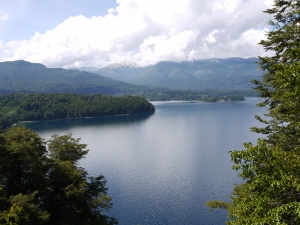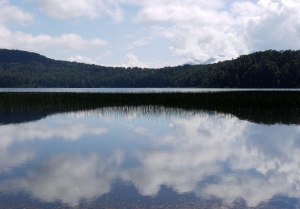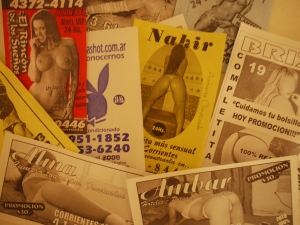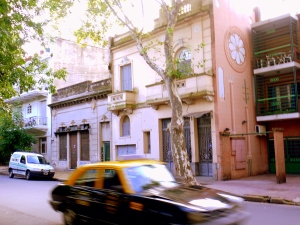There’s something about the proverbial tourist trap that just gets my goat.
Is it the Disneyfication of a place that was at least once kind of authentic? Is it the touts that accost you every second step pressuring you to eat at their restaurant, or trying to start fake conversations (usually beginning with the word “friend”) just to get you to stop so they can make the hard sell? What about the prices, 50% higher than anywhere else in the city, and the food, 50% worse?
What’s not to love?
“El Caminito” in the Bs.As. ‘hood of La Boca fully meets all these requirements for tourist trapdom and I had pretty much decided to give this block of candy-colored houses a wide berth. But, as my time here comes to a close (I don’t want to talk about it!), I fell victim to the marketing. This little street is in all the tourism material, was the main pic for the Smithsonian magazine cover story on the city, etc., etc. (Slide show below.)
The funny thing is, this tourist sinkhole is located right in the middle of a neighborhood that is considered fairly dangerous, La Boca. The name refers to the mouth of the Riachuelo river, a stinking cesspool of a waterway that gives the area its distinctive, disagreeable smell. (Although yesterday, a brisk breeze drove the most noxious fumes on their way.)
Back in the day, that day being the 19th century, is was the entry point for immigrants and goods to the city. Many new arrivals set up shop here and built houses with corrugated zinc.
They didn’t have money for paint, the story goes, so asked arriving ships to give them any leftovers. That’s why the dwellings were painted this crazy quilt of colors.
Back to the danger: most guides and several websites from travelers recommend not venturing down to the neighborhood after dark, nor straying away even during the day from the candy-colored street packed with restaurants and souvenir shops, and sprinkled with cops and couples dancing tango and posing for pictures in exchange for some cash.
I was concerned, emptying out my wallet before I went, dressing down, making sure my camera was safely hidden away, getting ready for the knife-wielding thugs surely lurking behind every bright pastel corner.
Turns out, I needn’t have worried. The place was so chock-full of Bermuda-wearing paleskins like me (well, minus the attire), that only the most criminal would have dared. OK, I’m sure it’s happened. I just stayed aware and was not bothered by anyone but the touts.
I’m not quite sure what the attraction is. It’s so fake and out of touch with anything actually happening in Buenos Aires (save the very cool contemporary arts center next door).
The food is pricey, the stuff for sale schlocky, the houses…kinda pretty, but you’re done in ten minutes. But then, people were actually paying to have their photographs taken behind those painted wooden boards with openings that you stick your head through. So what do I know?
The surrounding, more monochromatic neighborhood looked much more interesting. There is some cool mish-mashy architecture, the stadium for the Boca Juniors soccer team that is the local religious shrine, hole-in-the-wall restaurants grilling their beloved meat out on the street, and all in all a different side of Bs. As., far removed from my leafy, upscale Palermo neighborhood.
But as I still had vague thoughts of gangs of rampaging hoodies in my head, I didn’t get too far off the beaten track. Probably a wise move in the end; I’ve still got my camera.















